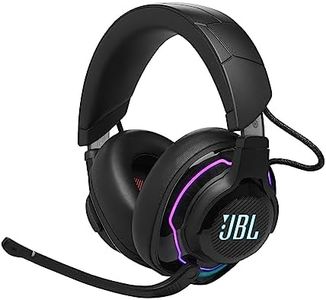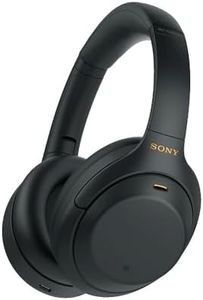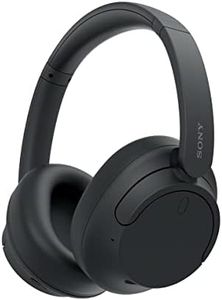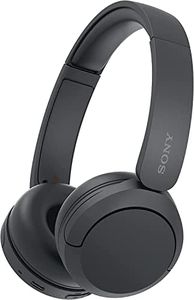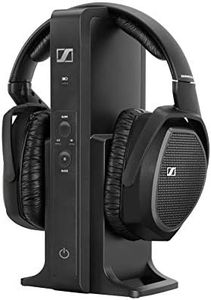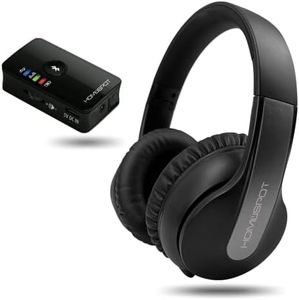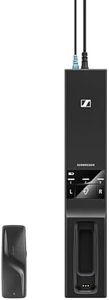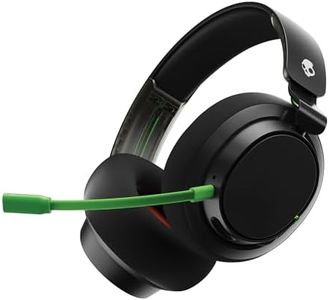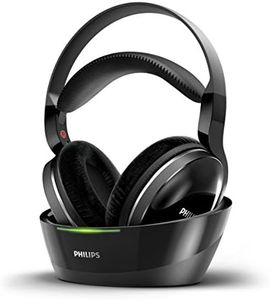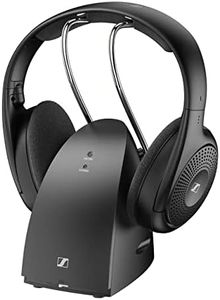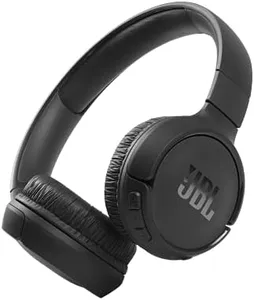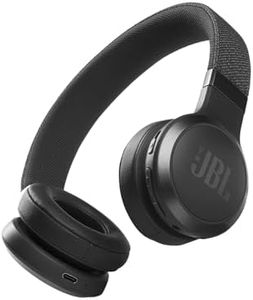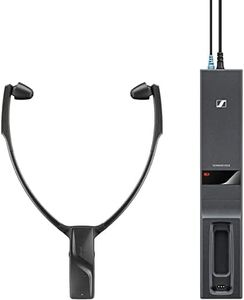We Use CookiesWe use cookies to enhance the security, performance,
functionality and for analytical and promotional activities. By continuing to browse this site you
are agreeing to our privacy policy
10 Best TV Headphones Wireless
From leading brands and best sellers available on the web.Buying Guide for the Best TV Headphones Wireless
Choosing wireless headphones for TV is all about finding a balance between comfort, sound quality, ease of use, and compatibility with your TV setup. Wireless models offer the convenience of movement without long cables, but not all headphones work equally well with every TV or room environment. It's important to think about how and when you'll use the headphones: do you plan to watch late at night, for hours at a stretch, or just occasionally for movies? Consider who else might use them and whether you'll wear them with glasses or hearing aids. The right pair should make your TV experience more immersive and comfortable, not more complicated.Wireless TechnologyWireless TV headphones commonly use either Bluetooth or dedicated radio frequency (RF) transmitters. Bluetooth headphones connect directly to TVs that support Bluetooth, but may have noticeable delay (lag) that can cause sound to be slightly behind the picture. RF headphones come with a base that plugs into the TV, offering longer range and usually minimal delay. Decide which type suits you by checking your TV's features—if your TV doesn’t have Bluetooth, RF might be simpler. If you walk around the house or have thick walls, RF systems usually work better.
Battery LifeBattery life tells you how long you can use the headphones before needing to recharge them. Some headphones last for only a few hours, while others may go for 20 hours or more on a single charge. If you like to watch several episodes in one sitting or don't want the hassle of frequent recharging, aim for models with longer battery life. For shorter, occasional use, even basic battery performance can be enough. Always consider your TV-watching habits here.
Sound QualitySound quality covers clarity, bass, and overall volume. Higher-quality headphones will give you clearer voices, more immersive effects, and less distortion at high volumes. If you are hard of hearing, look for headphones that prioritize dialogue clarity. If you want cinema-like audio, consider models that are known for rich bass and surround-like features. Try to test headphones before buying to judge if the sound matches your preference.
Comfort and FitComfort depends on the weight, padding, and how the headphones fit over or on your ears. Lightweight, softly padded headphones are best for long watching sessions, especially if you wear glasses or have sensitive ears. Over-ear designs usually feel less tight, while on-ear models are more compact but can press against your ears. Think about how long you'll wear them and whether you might share them—adjustability is key for family use.
Ease of Use and ControlsEase of use means how simple it is to connect, adjust volume, and operate your headphones without hassle. Some headphones have clearly marked buttons, voice prompts, or even auto-muting features when you take them off. If you’re not tech-savvy, look for simpler setups with clear instructions and minimal extra features that might confuse you. Consider who else in your household will use them; elderly users often appreciate fewer, larger buttons and easy-to-read labels.
TV CompatibilityTV compatibility is about whether the headphones can connect to your specific TV. Some TVs offer Bluetooth output; others need a wired connection to a transmitter. Check what outputs (like headphone jack, RCA, or optical) your TV has, and make sure the headphones or their base station can connect. If you have a soundbar or home theater system, confirm that using headphones won’t disrupt the regular audio setup.
RangeRange is the maximum distance you can be from your TV while keeping a clear audio signal. Bluetooth typically works within 10 meters or a single room, while RF headphones can sometimes reach 100 meters or more and work through walls. If you plan to move around your house while listening, prioritize longer range, but if you always sit close to the TV, almost any model will do.
